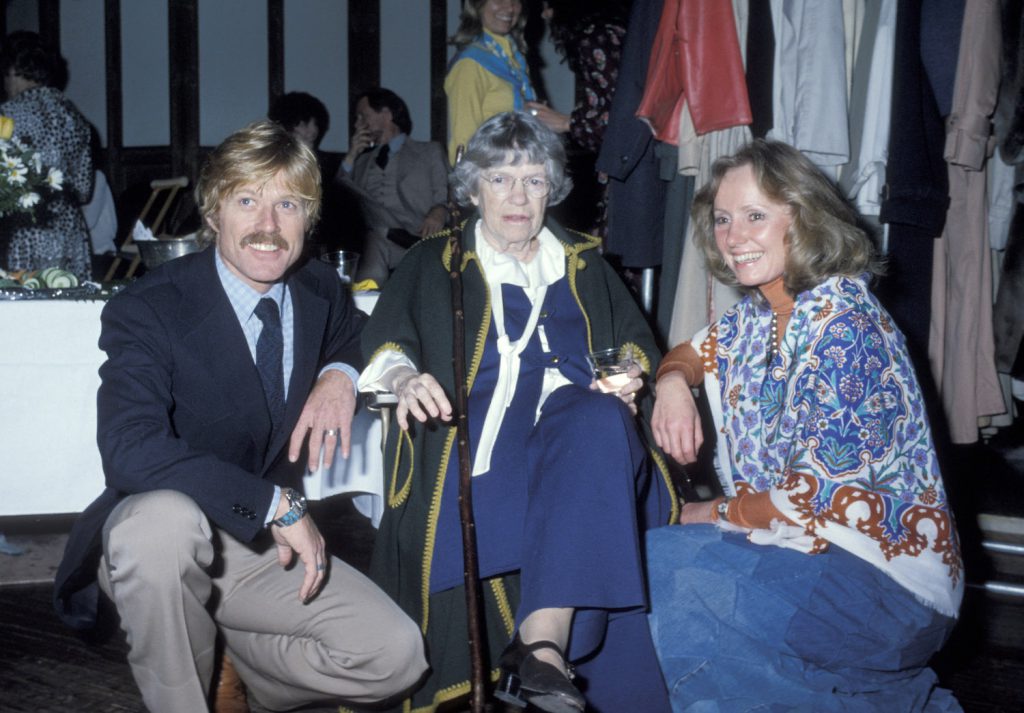Margaret Mead Imagined Different Futures

In the face of climate disaster, a continuing pandemic, and endless global conflict, it’s difficult to be optimistic about the future. Researchers in psychology have marked a sharp upswing in “eco-anxiety” among young people. Surveys show that most people in the U.S. believe life will get worse over the next 30 years. None of this is surprising. The future isn’t shaping up to be something many people look forward to.
When the status quo seems threatened—for example, by climate disaster—some turn to “technological salvation” in the form of new consumer products and engineering innovations to solve the problems. Technological fixes seem to offer comfort through the promise that life can continue as it does today. Yet when these solutions don’t work, people are left in the grips of anxiety over an oncoming apocalypse.
While conditions are undoubtedly dire, some of the anxiety-induced panic many of us feel may be due to the difficulty we have imagining alternatives. From its advent in Enlightenment thought in the 18th century, “progress” has come to mean increase: faster, bigger, richer. If the future doesn’t deliver “more and more”—or if this idea of progress leads ineluctably to ruin—then it doesn’t seem like much of a future at all.
However: There can be alternative futures. And anthropology—unlikely as it may seem at first glance—can help take us there. Anthropologists are deeply invested in making other worlds possible, as I know from 20 years of researching and writing about anthropology’s future orientations.
At its core, anthropology is the study of the past and present for the future, and its methods can help us imagine different futures than the ones that haunt us now.
The future-orientation of the field was evident from the very beginnings of contemporary cultural anthropology in the U.S. That became clear to me when I started learning about Margaret Mead’s long and legendary career, starting with her doctoral studies in anthropology at Columbia University under Franz Boas and Ruth Benedict in the 1920s, through decades of her work as a public intellectual until her death in 1978.
In 1928, Mead’s Coming of Age in Samoa captivated general readers with descriptions of Samoan adolescence and sexuality. After its release, some reviewers were scandalized by the frank discussion of promiscuity, especially among young girls. Decades later, critics attacked the accuracy of Mead’s ethnographic data. As an anthropologist, these controversies surrounding Mead’s work were familiar ground. But what intrigued me most upon closer inspection was Mead’s future-facing cultural critique.
Read on, from the archives: “The Life and Meaning of Margaret Mead”
Coming of Age in Samoa ends in a curious way. While most of the ethnography is devoted to portrayals of Samoan life, the final sections take on an entirely different subject: the problems faced by young women in the United States. If Samoan adolescents had a (comparatively) easier time adjusting to their maturing sexuality, as Mead claimed, couldn’t people in the U.S. raise their children in a similar way? Mead quickly dismissed that idea, but then offered up another possibility: Familiar U.S. ideals of freedom and liberal tolerance needed to be extended to adolescent women as they explored their own sexuality.
“They must be taught,” Mead concluded, “that many ways are open to them, no one sanctioned above its alternative, and that upon them and upon them alone lies the burden of choice.” In other words, alternative ideals of sexual freedom were already present within pluralistic U.S. society—just withheld from most of the middle-class women Mead addressed through her work.
This is an early version of Mead’s futurology—her exploration of anthropology as a resource for the study and planning of the future. Coming of Age in Samoa serves as a textbook guide for how to approach cultural critique anthropologically: Start with an insistence on cultural relativism, the general idea that cultural practices need to be understood within their cultural contexts. Then move from that to a recognition of what I would call “relativism within”: the search for alternative value systems and ways of life already present in our own societies. The trick is turning the anthropological gaze inward to question the ways the status quo obscures alternative possibilities, as Mead did when she pointed U.S. women to the choices they had regarding sexual freedom.
In many ways, Mead’s life was a touchstone for the struggle for a different, more open future. On one hand, she capitalized on privileges accorded elite, White women at the time, siding many times with the status quo on a number of social and political issues.
On the other hand, her romantic and sexual relationships with both women and men, and her critical analysis of 20th-century ideologies of family, suggested alternatives to the present. In her own way, she created room for a different future through the relationships she forged with the people around her.
By the 1960s, Mead was writing about the future across multiple institutions: the future of family and sexuality, certainly, but also the future of science, of space travel, of the environment, and of global peace. As Mead broadened the scope of her anthropology to speak out on public issues of the day, her thinking shifted more and more toward evoking these alternative futures. In fact, she was present at one of the pivotal events that forged the future horizons we see before us today.
Mead and her then husband, anthropologist Gregory Bateson, were unlikely additions to a series of landmark meetings on cybernetics sponsored by the Josiah Macy Jr. Foundation between 1946 and 1953. The Macy conferences brought together an interdisciplinary group of scientists to consider an emerging language of information, feedback, and neural networks, with the underlying goal of reunifying the sciences.
Insights from those conferences would, in many ways, pave the way for the world we’re experiencing: the manipulation of information, the interest in “controlling” the environment, the development of smart cities. Mathematician and philosopher Norbert Wiener, often credited as the founder of cybernetics, defined the field in 1948 as “the science of control and communications in the animal and machine.” Cybernetics, according to Wiener, was the discovery of a language that could control the world.
Anthropologists are deeply invested in making other worlds possible.
Yet Mead and Bateson (to Wiener’s chagrin) were less interested in the “control” dimension of cybernetics than the “communication” aspect. For the anthropologists, the Macy conferences were an opportunity to not only understand how people interact with the world around them, but also to think about new worlds that might emerge from these relationships. Bateson, for his part, expanded cybernetics into the study of human consciousness. He famously explained that the “mind” extends beyond the human brain to the body, to the body’s tools, and to the natural world with which the brain, body, and tools interact.
Meanwhile, Mead was compelled to speak out further on pressing issues of the day. In the context of environmental crises and the nuclear arms race, she articulated to scientific societies and to civic groups around the world her hope that people would choose a different direction for the future. She called for a “human-oriented society” where people were “willing to recognize our basic nature as one which shares the fundamental properties of life with all other living things.”
For Mead, the first step toward a more harmonious future was recognizing that the seeds for a genuinely different way of living with nature existed in the present moment.
As I think back on Mead’s legacy, I wonder what world we’d be living in if this version of cybernetics had come to pass.
Mead’s version suggests a very different future from the one many find themselves imprisoned in today. In this alternative scenario, humans recognize our common lot with life around us and then communicate and listen within these shared systems—all through the same mechanisms of feedback and information sharing that cyberneticists hoped would allow them to dominate and control the world by regulating how those systems act.
It’s worth noting that neither Mead nor Bateson wanted to spell out exactly what such a future of communicating and listening might look like; they just knew it would mean a different world.
And this, ambiguity and all, is the anthropological contribution. Mead and her generation of anthropologists knew that when we study other peoples and their worlds, whether those are geographically close or far from our homes, anthropologists can uncover alternative futures in the making.
We may be 100 years out from Coming of Age in Samoa, but this is the approach to the future that we still need now. We need to be reminded that we can be different in the future because we are already different—if we only open our eyes to the possibilities.
































